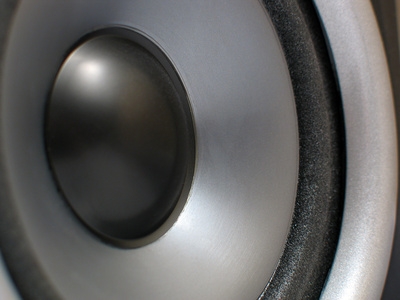
Determining the specifications for your subwoofer enclosure is possibly the most important part of the enclosure-building process. Subwoofers need to be given the proper amount of space within an enclosure to provide the best possible working environment. This will allow for the best sound quality and longer life for the speaker. There are several formulas to consider when designing a subwoofer enclosure, all of which can be found and calculated online or through specialized software.
The larger your subwoofer is, the more volume of space is needed around it. According to the JL Audio website, the recommended volume space for a 12-inch subwoofer is 1.25 cubic feet. For a 10-inch woofer, the volume recommendation is 0.625 cubic feet, and the recommendation for an eight-inch speaker is 0.375 cubic feet. You can build a larger enclosure to allow for more volume of space inside to produce a flatter sound, which is better for music that is less bass-heavy. A smaller-than-recommended box would not allow for proper acoustics and would limit the sound quality significantly, as well as wearing out the speaker more quickly than normal.
The subwoofer enclosure you build has to not only meet the volume requirement for your speaker, but be crafted in a way to make it fit your car. Many car trunks are large enough to accommodate the manufacturer-recommended rectangular dimensions, but if yours is not, you will be required to design an irregular-shaped enclosure. A good shape to consider is a triangular box, with the slope in the front, to allow for smaller trunks. An example of the recommended rectangular dimensions for a JL Audio 12-inch subwoofer are 18 inches by 13 inches by 13.75 inches, using .75 inch thick fiberboard.
Sealed subwoofer enclosures are completely sealed, air-tight speaker boxes. These boxes are appropriate for speakers that have a suitability factor of 50 or less. You can determine your suitability factor by dividing the Fs number, which is in Hz on your speaker's manual, and the Qes number, which is also listed in the speaker's manual. If the suitability factor is over 100, a ported enclosure would work best. A ported enclosure has a ventilation hole with a tube inside that extends from the front to the back of the speaker. A suitability factor between 50 and 100 means that either a sealed or ported enclosure would work well for the speaker.